- Home
- Anthony Trollope
Framley Parsonage
Framley Parsonage Read online
FRAMLEY PARSONAGE
ANTHONY TROLLOPE was born in London in 1815 and died in 1882. His father was a barrister who went bankrupt and the family was maintained by his mother, Frances, who resourcefully in later life became a bestselling writer. He received little education and his childhood generally seems to have been an unhappy one.
Happily established in a successful career in the Post Office (from which he retired in 1867), Trollope’s first novel was published in 1847. He went on to write over forty novels as well as short stories, and enjoyed considerable acclaim as a novelist during his lifetime. The idea for The Warden (1855), the first of his novels to achieve success, was conceived while he wandered around Salisbury Cathedral one mid-summer evening. It was succeeded by other ‘Barsetshire’ novels employing the same characters including Archdeacon Grantly, the worldly cleric, the immortal Mrs Proudie and the saintly warden, Septimus Harding. These novels are Barchester Towers (1857), Doctor Thorne (1858), Framley Parsonage (1861), The Small House at Allington (1864) and The Last Chronicle of Barset (1867). This series is regarded by many as Trollope’s masterpiece, in which he demonstrates his imaginative grasp of the great preoccupation of eighteenth- and nineteenth-century English novels – property. Almost equally popular were the six brilliant Palliser novels comprising Can You Forgive Her? (1864), Phineas Finn (1869), The Eustace Diamonds (1873), Phineas Redux (1874), The Prime Minister (1876) and The Duke’s Children (1880). The notable titles among his many other novels and books include He Knew He Was Right (1868–9), The Way We Live Now (1874–5), An Autobiography (1875–6) and Dr Wortle’s School (1881).
DAVID SKILTON was educated at King’s College, Cambridge, and Copenhagen University, and is Research Professor in English at Cardiff University, where until 2002 he was Head of the School of English, Communication and Philosophy. He is Literary Adviser to the Trollope Society and General Editor of the Trollope Society/Folio Society edition of Trollope’s novels. His books include Anthony Trollope and His Contemporaries (1972 and 1996), Defoe to the Victorians (1985). The Early and Mid-Victorian Novel (1993), and numerous editions of Victorian works, including Trollope’s Prime Minister (1994) and An Autobiography (1996) in Penguin Classics.
PETER MILES lectures at the University of Wales, Lampeter. He is author of “Wuthering Heights”: The Critics Debate (1999) and co-author of Cinema, Literature and Society: Elite and Mass Culture in Interwar Britain (1987). He has edited Tobias Smollett’s The Expedition of Humphry Clinker, Arthur Morrison’s A Child of the Jago and Wilkie Collins’s The Dream Woman and Other Stories. With David Skilton he has also edited Collins’s The Woman in White. He has contributed to such journals as The Book Collector, The Library and Studies in Bibliography.
ANTHONY TROLLOPE
Framley Parsonage
Edited with an Introduction and Notes by
DAVID SKILTON and PETER MILES
PENGUIN BOOKS
PENGUIN BOOKS
Published by the Penguin Group
Penguin Books Ltd, 80 Strand, London WC2H 0RL, England
Penguin Group (USA) Inc., 375 Hudson Street, New York, New York 10014, USA
Penguin Books Australia Ltd, 250 Camberwell Road, Camberwell, Victoria 3124, Australia
Penguin Books Canada Ltd, 10 Alcorn Avenue. Toronto, Ontario, Canada M4V 3B2
Penguin Books India (P) Ltd, 11 Community Centre, Panchsheel Park, New Delhi – 110 017, India
Penguin Group (NZ), cnr Airborne and Rosedale Roads, Albany. Auckland 1310, New Zealand
Penguin Books (South Africa) (Pty) Ltd. 24 Sturdee Avenue, Rosebank 2196, South Africa
Penguin Books Ltd. Registered Offices: 80 Strand. London WC2R 0RL, England
www.penguin.com
First published 1861
Published in the Penguin English Library 1984
Reprinted in Penguin Classics 1986
Reprinted with new Further Reading and Chronology 2004
19
Introduction and notes copyright © David Skilton and Peter Miles, 1984
Further Reading copyright © David Skilton 2004
All rights reserved
Except In the United States of America, this book is sold subject
to the condition that it shall not, by way of trade or otherwise, be lent,
re-sold, hired out, or otherwise circulated without the publisher’s
prior consent in any form of binding or cover other than that in
which it is published and without a similar condition including this
condition being imposed on the subsequent purchaser
EISBN: 978–0–141–90502–0
Contents
INTRODUCTION
THE WRITING AND PRINTING OF
Framley Parsonage
FRAMLEY PARSONAGE
NOTES
FURTHER READING
CHRONOLOGY
Introduction
‘I WISH Mr Trollope would go on writing Framley Parsonage for ever. I don’t see any reason why it should ever come to an end, and every one I know is always dreading the last number.’ Thus Trollope’s eminent novelist contemporary, Elizabeth Gaskell, writing to the publisher George Smith as soon as the third instalment had appeared in the Cornhill Magazine1 Having captured a very large market with his new monthly periodical, Smith had reason to be pleased with the whole venture, and not least with the novel he had commissioned for the first sixteen issues. The Cornhill and Framley Parsonage hit educated middle-class tastes exactly, together establishing the full-length novel serial in a general-interest monthly as one of the dominant publishing forms of the eighteen sixties. ‘How good this “Cornhill Magazine” is!’ wrote Elizabeth Barrett Browning of the fourth number. ‘Anthony Trollope is really superb.’2 Over 100,000 members of the public each month corroborated these judgements by buying the new magazine.
George Smith’s plan for his new periodical was simple but ambitious. Many of the greatest novels of the previous decades – major works by Dickens and Thackeray for example – had been published in nineteen monthly instalments at a shilling a month, with a double quantity in the final number and illustrations to each. Smith rightly believed that a magazine at the same price which combined the same quantity or more of serial fiction, illustrated as before, with a variety of articles by specialists on important topics of the day, would change the pattern of novel publication. He was not the first person to have this idea (Macmillan’s Magazine was on the bookstalls a month before the Cornhill), but Smith owed his immediate supremacy to an outstanding team of contributors. In appointing Thackeray as his editor he at once acquired one of the best-loved novelists of the day and one of the most respected men of letters in the London literary world. And the names Thackeray recruited amply demonstrate his influence, as well as the generous payments Smith offered. The first few years saw contributions from Thackeray himself, Trollope, George Eliot, Arnold, Ruskin, G. H. Lewes, Tennyson, and many others besides. Great care was to be lavished on the illustrations. John Everett Millais was employed to illustrate Trollope, and Thackeray illustrated his own work, while the then famous names of W. J. Linton and C. Swain, and the resources of the Dalziel brothers, the finest wood-engravers in London, ensured the very highest standard.
Such was the scale of the enterprise to which Trollope had modestly asked to be allowed to contribute in a letter to Thackeray dated 23 October 1859, in which he offered a series of short stories, entitled Tales of All Countries, each ‘redolent of some different country’ and arising out of his extensive travels.3 He expected at least £20 for each story, and was quickly answered instead with an offer from Smith of £1,000 for a novel to take the leading position in the new magazine. A letter from Trollope’s idol, Thackeray, followed, expressing the
warmest admiration for his recent work:
There was quite an excitement in my family one evening when Paterfamilias (who goes to sleep on a novel almost always when he tries it after dinner) came up stairs into the Drawing room wide awake and calling for the second volume of The Three Clerks. I hope the Cornhill Magazine will have as pleasant a story…4
The terms and the praise were sweet to Trollope, who was then, he says in his Autobiography, at the bottom of the tree.5 He had some well-thought-of books behind him, but commanded no great money from publishers; although increasingly successful as a Civil Servant in the Post Office, he was stationed in Ireland and hence quite out of touch with the London literary scene. The offer from George Smith was the turning-point in his writing career. He was at once to become not merely prosperous but one of the leading novelists of the day, and to confirm the judgement of him by The Times as ‘the Apollo of the circulating library’.6 Tales of All Countries were eventually written incidentally and appeared in a number of periodicals, though Thackeray found the stories too strong for his ‘squeamish’ readership of the Cornhill.7 What the magazine required was distinctively English fiction. Framley Parsonage proved to be the epitome of a certain kind of Englishness. In Journey to a War (1939) W. H. Auden and Christopher Isher-wood were to capture their sense of cultural incongruity as they journeyed towards the Sino-Japanese war zone by means of an image of themselves insulated in a railway compartment reading aloud Scott’s Guy Mannering and Trollope’s Framley Parsonage, while outside in the corridor patrolled armed Chinese guards.8
When George Smith’s offer came Trollope was already well advanced with a novel set during the Irish famine, and Chapman and Hall generously agreed to release him from his arrangement with them so that it could be printed in the Cornhill if it would suit. He hurried to see Smith, who, hearing that the novel in question, Castle Richmond, was an Irish story, Trollope relates,
… begged that I would endeavour to frame some other for his magazine. He was sure that an Irish story would not do for a commencement – and he suggested the Church, as though it were my peculiar subject… He wanted an English tale, on English life, with a clerical flavour. On these orders I went to work, and framed what I suppose I must call the plot of Framley Parsonage. 9
So Trollope found himself writing two novels at once and, for the only time in his life, publishing the opening of a serial before he had finished it. Now began a period which was unusually busy even in Trollope’s extraordinarily busy life. Suspending work on Castle Richmond for two months, he launched himself on Framley Parsonage on the journey home to Ireland at the beginning of November 1859, and was already correcting proofs of the first three chapters on the twenty-fifth of the same month. In December, while still writing hard, he moved house from Ireland to Waltham Cross, a dozen miles from London, with his wife and two sons, to take charge of the Eastern District of the General Post Office. The move and the responsibilities of his new post did not prevent the completion of Castle Richmond in March of 1860, and of Framley Parsonage in June of the same year.10 We know little about Rose Trollope, the wife of this energetic author and Civil Servant, and can only speculate on the enormous effort she too must have exerted at this and many other stages in his career.
Her husband had certainly progressed in life since their marriage in 1844, when he was only just establishing himself in any sort of respectability as Deputy Postal Surveyor at Banagher in the centre of Ireland after a miserable boyhood and youth, which he later vividly described in An Autobiography (1883). The son of a failed barrister and most difficult man, and of a brilliant and energetic woman who turned writer in her middle life to save the family from the ruin to which her husband had brought it, Anthony Trollope was universally judged destined for a lifetime of failure. He was procured a clerkship at the General Post Office, through family interest rather than his own abilities and education, and fell into a course of debt and minor dissoluteness that cannot even qualify as glamorously bohemian. In a sense he grew up when he was sent on his lowly but rather independent posting to Banagher, where all at once he found himself a person of a little consequence, respected for the integrity with which he carried out his duties, and popular for the energy with which he followed the hounds.
During the forties he turned to the family industry of writing, and his first novel, The Macdermots of Ballycloran, came out in 1847 when his mother’s twenty-first novel was in the press and his elder brother, Thomas Adolphus, had been publishing for seven years. There is evidence that Anthony always secretly wanted to be a writer but, unlike Thomas Adolphus, he received no encouragement from his eminent mother, who seems to have entertained no hopes for him and largely to have ignored him. Although The Macdermots is now critically respected it was not a success in 1847 and the new novelist had to wait until 1855 and his fourth novel, The Warden, for any degree of recognition at all. It was only with Barchester Towers in 1857 that his name became known, and between that date and his important connection with the Cornhill Magazine he managed with characteristic energy to publish The Three Clerks (1857), Doctor Thorne (1858), The Bertrams (1859) and The West Indies and the Spanish Main (1859), as well as negotiating a postal treaty with Egypt early in 1858 and reorganizing postal services in the West Indies during the winter of 1858–9. When Thackeray found himself then without a major novel of his own to take the leading position in the Cornhill Magazine, there was no practitioner more reliable than Anthony Trollope to whom he could turn.
For evidence of how good Thackeray’s choice was in market terms we need only look at a few of the contemporary reviews. The Saturday Review, which generally rather looked down on all but the most intellectual novels, describes the popularity of Framley Parsonage in striking terms:
The author of Framley Parsonage is a writer who is born to make the fortune of circulating libraries. At the beginning of every month the new number of his book has ranked almost as one of the delicacies of the season; and no London belle dared to pretend to consider herself literary, who did not know the very latest intelligence about the state of Lucy Robarts’ heart, and of Griselda Grantley’s [sic] flounces… It seems a kind of breach of hospitality to criticise Framley Parsonage at all. It has been an inmate of the drawing-room – it has travelled with us in the train – it has lain on the breakfast-table. We feel as if we had met Lady Lufton at a country house, admired Lord Dumbello at a ball, and seen Mrs Proudie at an episcopal evening party.11
Towards the end of the serialization, the editor of the Athenaeum refers to ‘the hundred thousand readers who have followed with breathless eagerness the loves of Lucy Robarts and Lord Lufton, and who have gossiped and cried over Mark and Mrs Mark, as though they had been living personal friends’, and predicts that they will ‘miss the pleasant excitement, the chatty good humour, and the light, bright playsomeness of this monthly visitation’.12 For his part, the reviewer of the first book edition in the British Quarterly Review declared that he was quite exceptional in not having been able to read the novel in serial form:
It is, we think, a story which, though perfect in its elaboration, and charming in the flow of continuous narrative, is not well suited to the monthly driblets of a periodical. Now, however, that it has appeared in three-volume completeness, we have read it with an interest that could not flag, and which, in fact, refused us any respite till we had exhausted the last page.13
The critics of the day identify some of the qualities which made Framley Parsonage popular on its first appearance and which still retain their appeal today: the fluent and expressive style, the humour, the intelligent absorption in the essentially everyday, the tolerant analysis of conduct in the commonplace business of life; and, in addition, the moderate suspense, the ordinary and almost ‘approachable’ characters, and the comforting sense of life going on, which made it a successful serial then, and once again, almost a century later, on the radio in the 1950s. For Trollope’s contemporaries, though, there were still other attractions. In particular they recei
ved a strong impression of life as it was lived at that very time. On his death one of his best critics was to go so far as to claim that his novels ‘picture the society of our day with a fidelity with which society has never been pictured before in the history of the world’.14 There was, too, a special sense of topicality about Trollope’s fiction. For various reasons Dickens, Thackeray and George Eliot usually set their novels about their own age back a few decades – often to the period of their own childhood or youth – and hence costumes and customs were dated, and references to up-to-the-minute ideas and events had to be rather carefully encoded to avoid damaging the chronology. Trollope’s procedure was quite different. He wrote with an eye to the very moment of composition, incorporating numerous references to current affairs calculated to give the reader the impression that the characters of the novel inhabited the same world and read the same newspapers as he did. Among the topics of the day alluded to in Framley Parsonage, apart from clear references to the Crimean War and the Indian Mutiny, are the new divorce court, established in 1858, the abolition of the Paper Duties in 1860, the Reverend Bryan King and the ritualism riots in East London in 1859–60, the Reverend Charles Spurgeon and his Metropolitan Tabernacle, opened in 1861, and even the introduction of a new invalid’s food in the eighteen fifties under the name ‘Revalenta Arabica’. Other topical matters can be less precisely dated, such as the public debate on clerical incomes, with particular reference to curates’ stipends, or the change from service à la française to service à la russe at the dinner-table, which the historian of nineteenth-century French food, Jean-Paul Aron, places in the eighteen fifties and sixties.15 These things, which are identified and explained in the notes to this edition, give an exceptional feeling of actuality to the novel. Indeed readers seem actively to have expected the novelist to deal with topical issues of the day, and Lord Carlisle, the Viceroy of Ireland, wrote to say that he was ‘curious to know what effect the Essays and Reviews may produce upon the Barchester Society’.16 At one point John Everett Millais, who was illustrating the novel, was even more up-to-the-minute than Trollope, and pictured a dress in the latest fashion which, the author protested to George Smith, would be thought ‘simply ludicrous’. If proof is needed of Trollope’s consciousness of the topical appearance of his fiction, it can be found in a letter of 21 July 1860 in which he withdraws his objection: ‘I will now consent to forget the flounced dress. I saw the very pattern of that dress some time after the picture came out.’17 Actuality was the final arbiter of the question – though we shall never know whether Millais’s plate had been the original model for the dress in question.

 Doctor Thorne
Doctor Thorne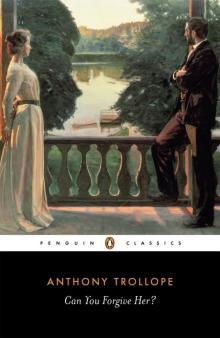 Can You Forgive Her?
Can You Forgive Her?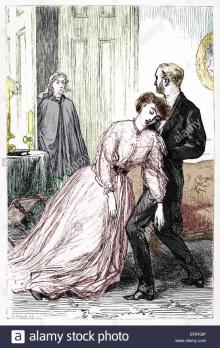 The Last Chronicle of Barset
The Last Chronicle of Barset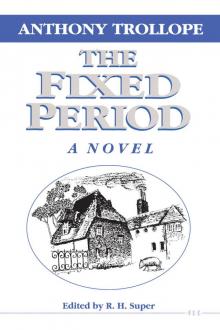 The Fixed Period
The Fixed Period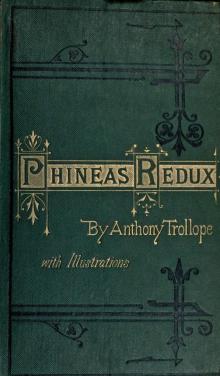 Phineas Redux
Phineas Redux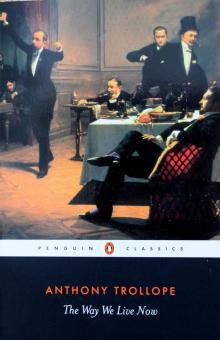 The Way We Live Now
The Way We Live Now Castle Richmond
Castle Richmond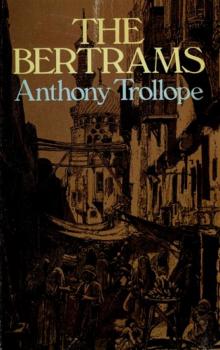 The Bertrams
The Bertrams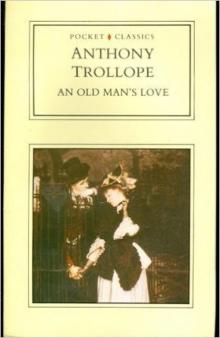 An Old Man's Love
An Old Man's Love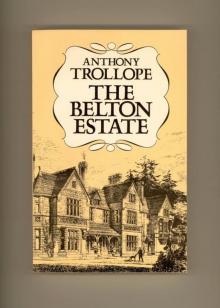 The Belton Estate
The Belton Estate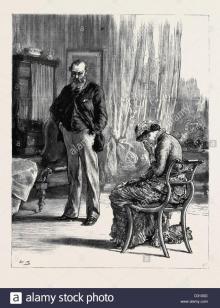 Marion Fay: A Novel
Marion Fay: A Novel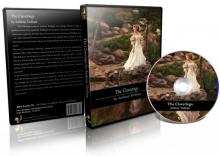 The Claverings
The Claverings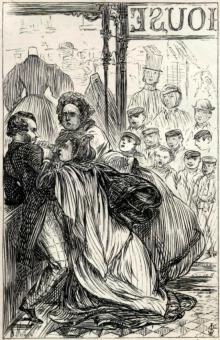 The Struggles of Brown, Jones, and Robinson
The Struggles of Brown, Jones, and Robinson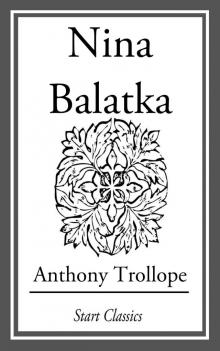 Nina Balatka
Nina Balatka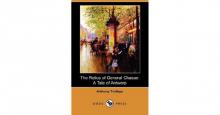 The Relics of General Chasse: A Tale of Antwerp
The Relics of General Chasse: A Tale of Antwerp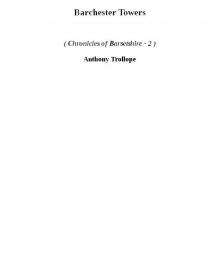 Barchester Towers cob-2
Barchester Towers cob-2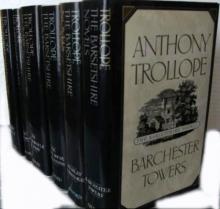 The Chronicles of Barsetshire
The Chronicles of Barsetshire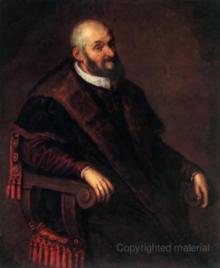 The Warden cob-1
The Warden cob-1 Framley Parsonage
Framley Parsonage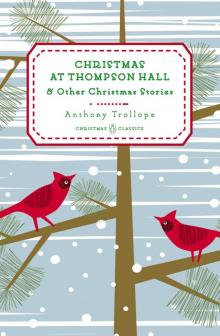 Christmas at Thompson Hall
Christmas at Thompson Hall The Warden
The Warden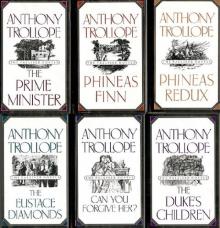 The Palliser Novels
The Palliser Novels The Small House at Allington
The Small House at Allington Barchester Towers
Barchester Towers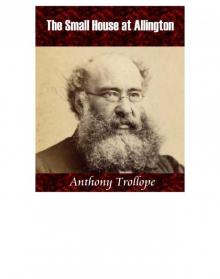 The Small House at Allington cob-5
The Small House at Allington cob-5 The Duke's Children
The Duke's Children Phineas Finn, the Irish Member
Phineas Finn, the Irish Member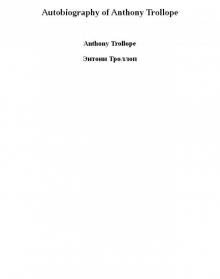 Autobiography of Anthony Trollope
Autobiography of Anthony Trollope